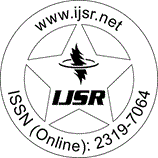Downloads: 126 | Views: 375
Research Paper | Computer Science & Engineering | India | Volume 6 Issue 2, February 2017 | Popularity: 6.7 / 10
Ultra-High Reliability for Non-Mission-Critical Applications
Renu Garg, Dr. Amit Gupta
Abstract: A desire to achieve Ultra high reliability of a system may demand more investment in terms of time and cost. Which means higher time and higher cost may diminish the expected returns. In other words, increasing the reliability may increase the efficiency of the software, but it does not always ensure the achievement of commercial objective of the organisation. A system is reliable if it is used according to its specific parameters. For non-mission-critical applications achieving ultra-high reliability is advantageous but not obligatory rather it may lead to diminish the returns. In today's competitive environment, delay in product release may lead to opportunity loss and hence revenue loss. If system is tested time and again to make it failure free, it may offer a competitive advantage to other company. However, in case of mission-critical applications achieving ultra-high reliability is imperative. Such applications are expected to deliver high level of security and accuracy because low reliability may lead to unbearable losses. In this scenario, investment of time and cost is acceptable & justified.
Keywords: Ultra-high reliability, mission-critical applications, Software Quality, reliability prediction
Edition: Volume 6 Issue 2, February 2017
Pages: 1053 - 1057
Please Disable the Pop-Up Blocker of Web Browser
Verification Code will appear in 2 Seconds ... Wait
